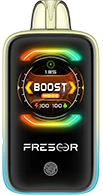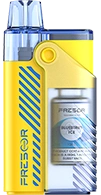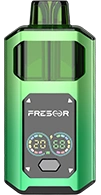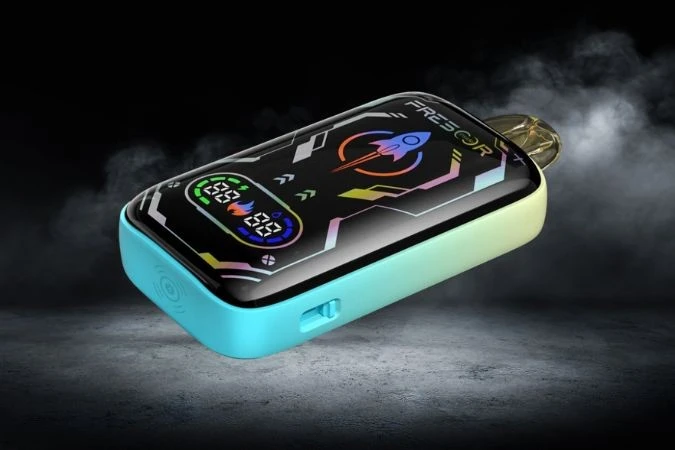Can You Take Vapes on a Plane in 2024? Essential Air Travel Tips for Vapers

29 March 2024
Can you take vapes on the plane in 2024? This is the most asked question by experienced and newbies in the vaping industry. The popularity of vaping has soared in recent years, but navigating air travel regulations with your vape gear can be confusing. For vapers planning to fly, acquainting oneself with the latest air travel regulations ensures a smooth and hassle-free journey.
This guide will answer your burning question: can you take vapes on a plane in 2024? We'll delve into the specifics of packing, security screenings, and international considerations, ensuring a smooth and vape-compliant journey.
Let’s dive into the meat of it;
Can You Take Vapes on a Plane in 2024? The Most Burning Question Answered!
Yes, you can take vapes on a plane in 2024, but with significant restrictions. Here are more suggestions concerning bringing vapes on a plane shared by vape enthusiasts on Reddit.



However, navigating these restrictions, particularly concerning vape batteries, is crucial for a smooth and safe travel experience. Why are vape batteries so critical in a plane?
Let’s find out:
Why Vape Battery Regulations Matter on a Plane?
The primary concern surrounding vapes on airplanes centers around the lithium batteries that power most devices. These batteries contain a concentrated amount of energy and, if damaged or mishandled, can pose a fire risk.
For this reason, the Federal Aviation Administration (FAA) and the Transportation Security Administration (TSA) have established specific regulations for carrying vape batteries on airplanes.
Here's a breakdown of the key points to understand about vape batteries in 2024:
· Lithium Battery Restrictions: The TSA limits the type and capacity of lithium batteries allowed on board. Most vape batteries are lithium-ion batteries, which fall under these regulations. Generally, you can bring lithium-ion batteries with a rating of no more than 100 Watt-hours (Wh) per battery.
· Fire Risk: Lithium batteries can overheat and potentially catch fire if damaged, shorted out, or exposed to extreme temperatures. The pressurized environment of an airplane cabin can further elevate this risk. The regulations aim to minimize the potential for such incidents.
Understanding vape batteries is just the tip of the iceberg in acquainting yourself with all the vaping and air travel regulations. If you’re looking forward to getting all your burning questions about vaping and travel regulations answered, Fresor has got you covered. Read on to find out;
Vaping and Air Travel Regulations: Understanding All the Basics
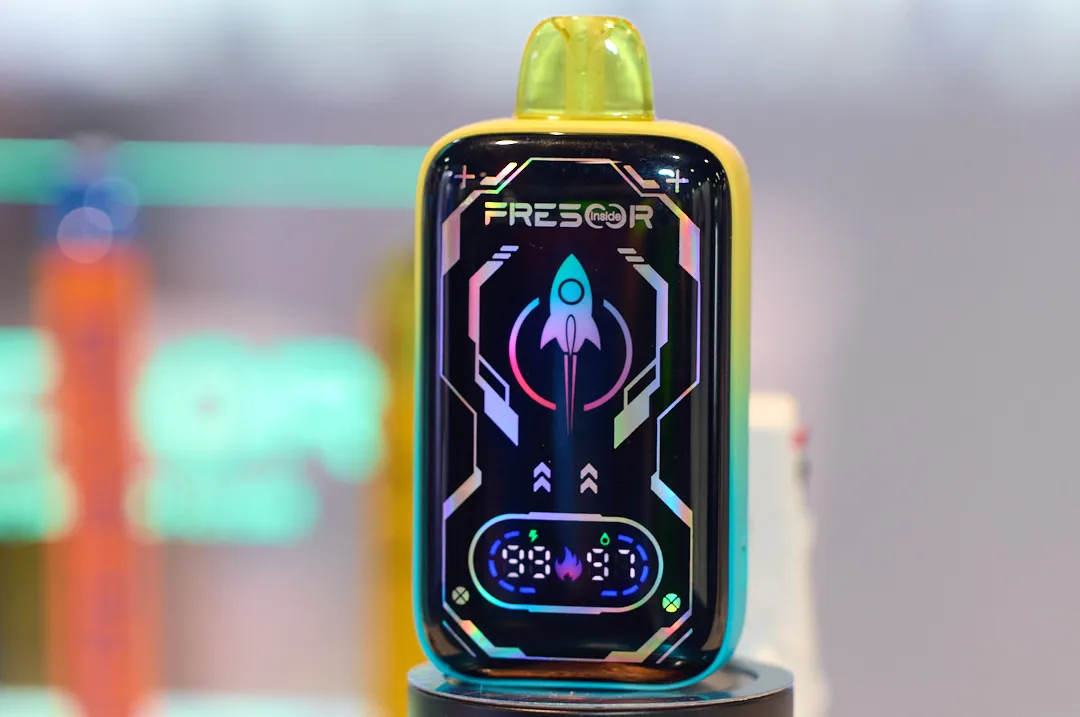
Understanding air travel regulations for electronic cigarettes and vaping devices can seem daunting for vapers. As vaping continues to intertwine with the daily lives of many, knowing how to pack and carry these devices when flying is crucial.
Let's delve into the essentials of air travel regulations concerning vapes, ensuring you're well-prepared for your next flight.
Packing Your Vape
· Carry-on vs. Checked Baggage
These regulations are clear: vaping devices, including e-cigarettes and vape pens, equipped with lithium-ion batteries or lithium metal batteries, must be carried in your carry-on luggage. This rule is in place due to the potential fire risk associated with these batteries under the cargo's varying air pressure conditions.
Checked luggage is not an option for these items to prevent any risk of accidental activation leading to a small fire. The FAA and other aviation authorities have established these guidelines as effective measures to enhance flight safety.
· Device and Battery Storage
Proper storage of your vape device and batteries is paramount. Ensure your device is turned off to prevent accidental activation, especially since the heating element can become a hazard if unintentionally engaged.
Additionally, spare batteries should be stored separately, with the terminals covered to prevent short circuits that could lead to a fire risk. A battery case or taping over the battery terminals is recommended for carrying spare batteries. Most airlines allow you to bring up to two spare batteries.
· E-liquid Restrictions
The Transportation Security Administration (TSA) regulations in the US, for instance, limit the volume of each container to 100ml (3.4oz) or less. All e-liquid containers must be placed in a single, clear, resealable plastic bag similar to the one used for other toiletries. This ensures that vapers can carry enough e-liquid for their journey while adhering to safety guidelines.
Security Screening
Due to the specific nature of vaping devices and their components, you might be subjected to extra checks at airport security. To facilitate a smoother screening process, present your vape and any e-liquids openly to TSA agents. This transparency helps security personnel quickly verify the items, reducing the chance of delays.
Onboarding the Plane
Once on the plane, it's crucial to remember that using vaping devices or e-cigarettes during the flight is strictly prohibited. The enclosed environment of an aircraft makes vaping a safety concern and discomfort for other passengers.
However, some airlines may allow the use of alternative nicotine options, such as nicotine gum, to accommodate those looking to manage cravings during a flight.
Remember, vaping laws and regulations can vary depending on your destination country. Be sure to research the local laws before you travel to avoid any problems.
Additionally, while TSA guidelines apply to most US airports, individual airlines may have additional restrictions on vape devices and e-liquids. Always check the baggage allowance information on your airline's website before you fly.
International Travel Considerations for Vapers-All You Need to Know
"Can you take vapes on a plane?" is just the beginning. Once you land, the legal landscape regarding vaping devices, such as electronic cigarettes and vape pens, including the specifics around carrying vape batteries and e-liquids, can differ significantly from one country to another.
Nonetheless, here's how to navigate the complexities of international travel and ensure a smooth travel experience:
Understanding International Vaping Laws
Before you start on international travel, it's crucial to research the vaping laws of your destination country. Some nations have stringent regulations on the possession and use of vaping devices and accessories.
For instance, due to their fire risk, countries may have specific restrictions on the types of vape batteries allowed, with stringent rules regarding lithium ion and lithium metal batteries. The permitted capacity of vape juice or e-liquid and the presentation of these items in carry-on luggage also vary.
Best Practices for International Vapers
1. Research Local Laws
The cornerstone of international travel for vapers is thorough research. Understanding the local laws of your destination regarding vaping is essential to avoid facing significant legal problems. This includes knowing whether vaping devices are allowed in public places, designated smoking areas, or strictly prohibited altogether.
2. Packing Your Vape Correctly
Regarding packing, the general rule of thumb is to keep all your vaping devices, including e-cigarettes and vape pens, spare batteries, and e-liquids, in your carry-on luggage. This is not just a guideline from the Transportation Security Administration (TSA) but a safety measure recognized globally due to the potential fire risk associated with lithium batteries under changing air pressure conditions.
Ensure batteries are stored in a battery case to prevent accidental activation, and remember that carrying e-liquids follows the standard liquid rules applicable to carry-on bags, usually limited to containers no more significant than 100ml within a clear, resealable plastic bag.
3. Prepare for Airport Security
Given the unique nature of vaping devices and their components, be prepared for extra scrutiny at airport security checkpoints. Having your vaping gear easily accessible in your carry-on bag allows for efficient presentation during security checks, potentially easing the process.
4. Respect Onboard Policies
While onboard, it's essential to respect the airline's policies, acknowledging that vaping on a plane is strictly prohibited. If you require nicotine during your flight, consider alternative options like nicotine gum, if permitted by the airline.
5. Navigate Terminal Buildings with Care
Upon arrival, while navigating terminal buildings, be mindful of designated smoking areas and local regulations surrounding vaping. Many airports have specific zones for smoking and vaping, and using your device outside these areas could lead to penalties or fines.
6. Managing E-liquids and Refills
When traveling internationally, it's also wise to have a sufficient supply of vape juice for your trip, considering that specific destinations might have restrictions on selling vaping products. However, always ensure that your supply complies with airline regulations and your destination's legal limits.
Packing Tips for Vapers: A Checklist

For vapers planning to travel by air, packing your devices and supplies correctly is essential for a hassle-free experience. Whether you're wondering, "Can you take vapes on a plane?" or how to transport your vape gear safely, this comprehensive checklist and set of best practices will ensure you're well-prepared for your flight.
Let's dive into the essentials for packing vaping devices, batteries, e-liquids, and accessories, incorporating all necessary precautions to align with TSA regulations and airline policies.
Comprehensive Checklist for Packing Vape Gear
· Vaping Devices and Vape Pens
Ensure all vaping devices, including e-cigarettes and pens, are fully powered off to prevent accidental activation. This is crucial as the heating element in these devices could pose a fire risk if unintentionally engaged.
Pack all vaping devices in your carry-on luggage or hand luggage. Checked baggage is not suitable for these items due to safety concerns.
· Batteries
Carry all vape batteries, including lithium ion and lithium metal batteries, in your carry-on baggage to comply with aviation safety regulations. This measure mitigates fire risks associated with changes in air pressure and temperature in the cargo hold.
Use a battery case or cover the battery terminals with tape for all spare batteries to prevent short circuits. You're generally allowed to bring two spare batteries, but they must be adequately protected.
· E-liquids and Vape Juice
Follow TSA guidelines for liquids by packing your e-liquids in containers not exceeding 100ml. Place these containers in a clear, resealable plastic bag alongside other liquids you're carrying onboard.
Consider the amount of vape juice you'll need for your trip, considering the restrictions on liquids and the availability of your preferred e-liquid at your destination.
· Accessories
Include all necessary vaping accessories in your carry-on luggage, such as coils, vape tanks, and chargers. Remember, anything crucial to your vaping experience should be accessible and not packed in checked baggage.
Best Practices for Storing Your Vaping Gear While Flying
· Security and Accessibility
Keep your vaping gear together in a specific section of your carry-on bag to ease the security screening process. Presenting your devices and liquids quickly can help prevent delays and extra checks at airport security.
· Preventing Accidental Activation
Double-check that all devices are turned off before boarding. Consider removing batteries from devices to ensure no accidental activation during the flight.
· Compliance with Local Laws and Airline Policies
Familiarize yourself with the vaping laws of your destination and the specific airline policies you're flying with. This knowledge will help you navigate terminal buildings and designated smoking areas and respect local regulations upon arrival.
· Handling E-liquids
To prevent leaks due to changes in air pressure, tightly seal all e-liquid bottles and consider placing them in a separate, leak-proof bag within your carry-on luggage.
· Emergency Preparations
Prepare for potential scrutiny or questions about your vape gear by having readily available information on your devices and their safety features. Understanding and explaining the purpose and safety of your vaping devices can smooth out interactions with airline staff and security personnel.
Vaping and Air Travel: Frequently Asked Questions (FAQ)
· How many disposable vapes can I bring on a plane?
The TSA doesn't explicitly limit the number of disposable vapes you can bring on a plane. However, all vapes, including disposables, must be carried in your carry-on luggage due to restrictions on lithium batteries in the cargo hold. Considering the airline's policies on electronic devices and liquids, it's practical to bring only what you'll need for personal use during your trip.
· Are there any differences in regulations for international flights?
Yes, international regulations on carrying vapes can vary significantly from one country to another. While TSA regulations apply to flights departing from or entering the United States, other countries may have their own rules regarding the transportation of vaping devices and liquids. Always check the regulations of your destination country and any countries you may transit through.
· What happens if I accidentally pack my vape in my checked luggage?
If you accidentally pack your vape or any lithium batteries in your checked luggage, you may face delays, fines, or even confiscation of the item by airport security.
Airlines are strict about the carriage of lithium batteries in the cargo hold due to the fire risk they pose. It's important to double-check your luggage before checking it in to ensure all vape gear is correctly placed in your carry-on.
· Can I use a vape pen with CBD oil while flying?
Using any type of vape pen, including those with CBD oil, is prohibited during flight. The FAA regulates the use of electronic smoking devices on planes to ensure the safety and comfort of all passengers. Additionally, the legality of CBD oil varies by jurisdiction, so carrying CBD oil, even in a vape pen, may have legal implications depending on your destination.
Conclusion
Traveling by air as a vaper requires a good understanding of the regulations governing the transportation of vaping devices, batteries, and liquids. Remember, to comply with safety regulations, the fundamental rules are to carry all vaping devices, spare batterArticle 1, can you take vapes on a planeies, and e-liquids in your carry-on luggage, not in checked baggage.
Be aware of the limitations on liquid quantities (such as e-liquids) and ensure they are packed according to TSA guidelines. Always check your destination's vaping laws and airline policies and any countries you may transit through to avoid legal.





